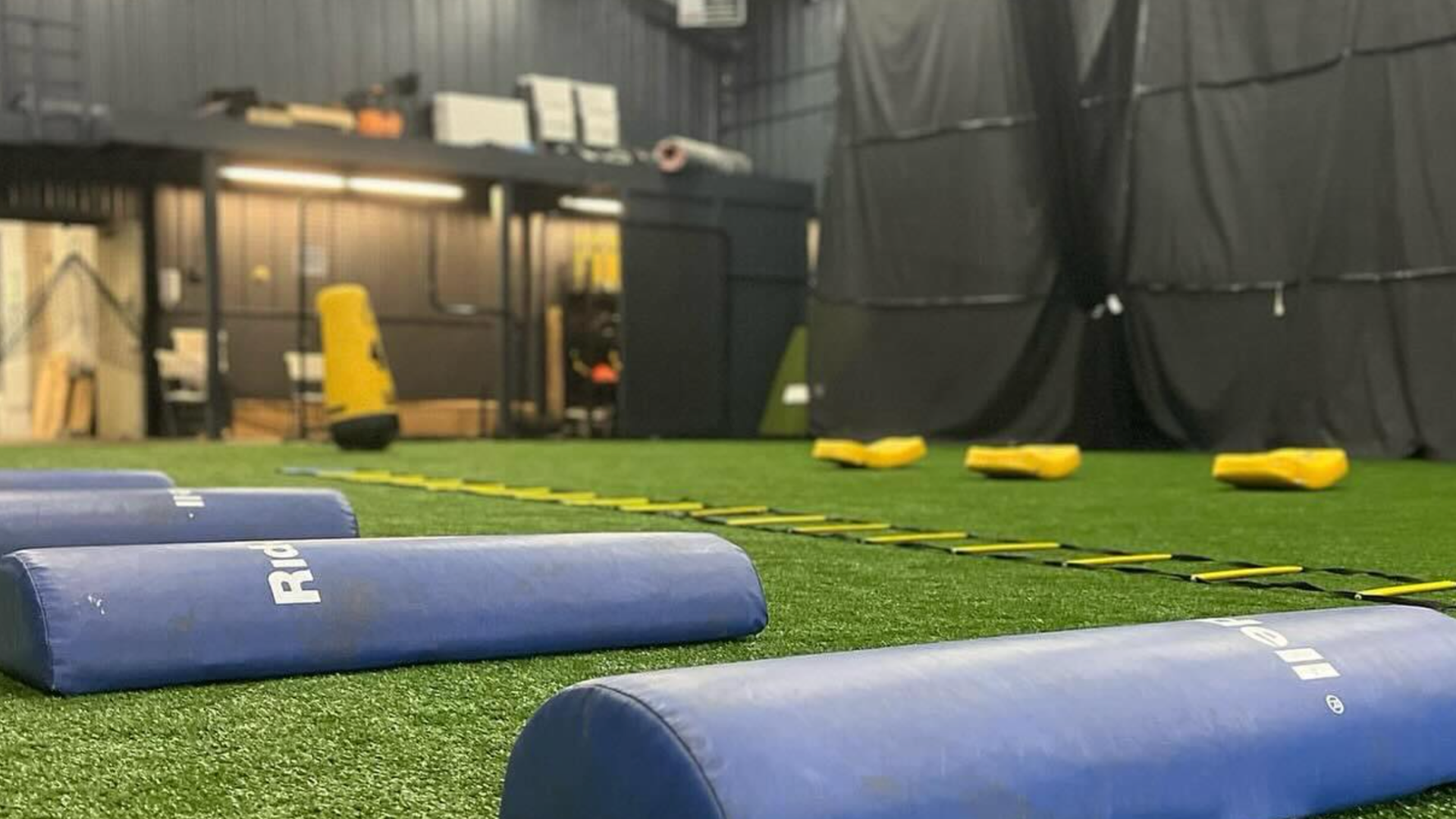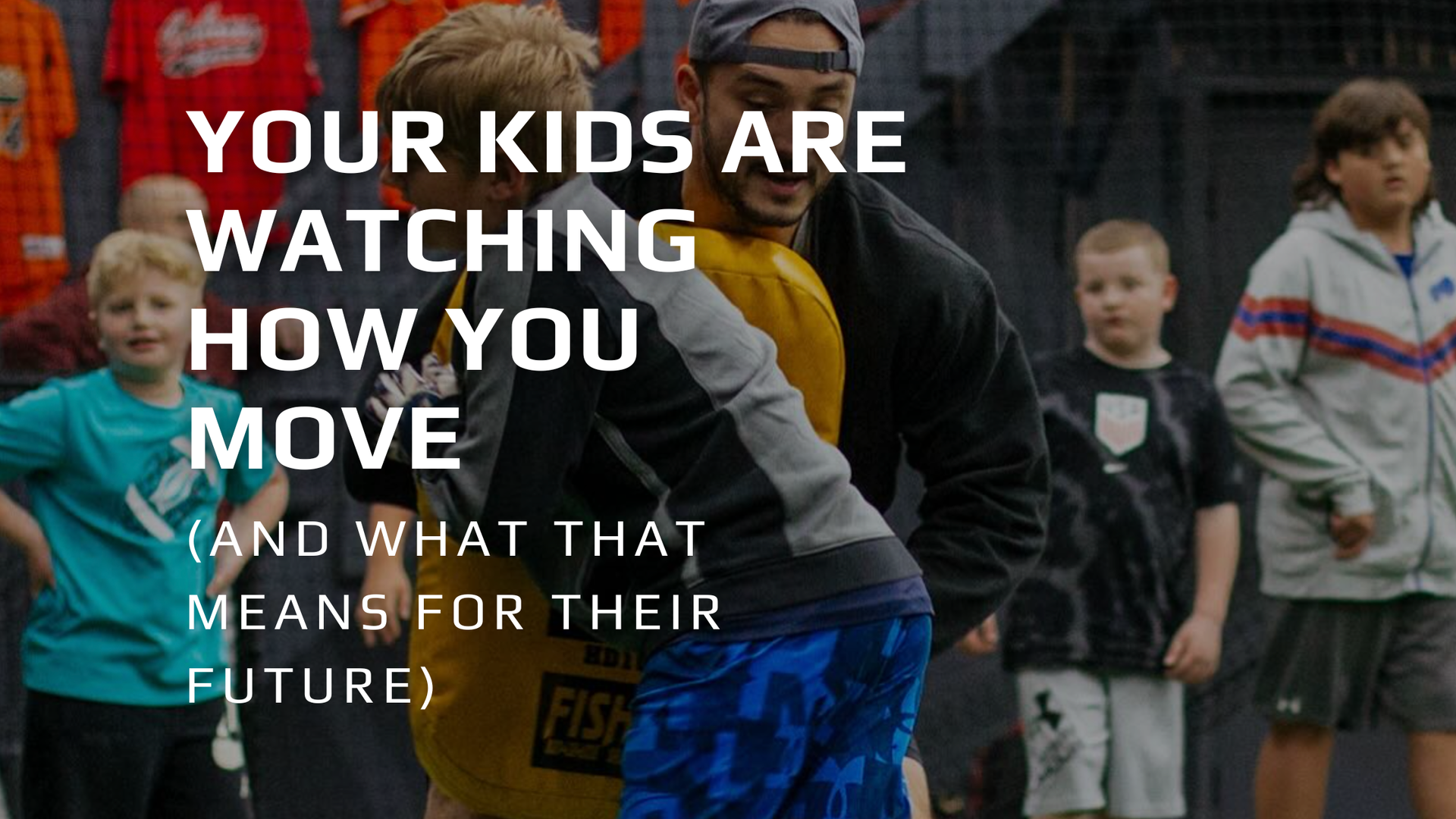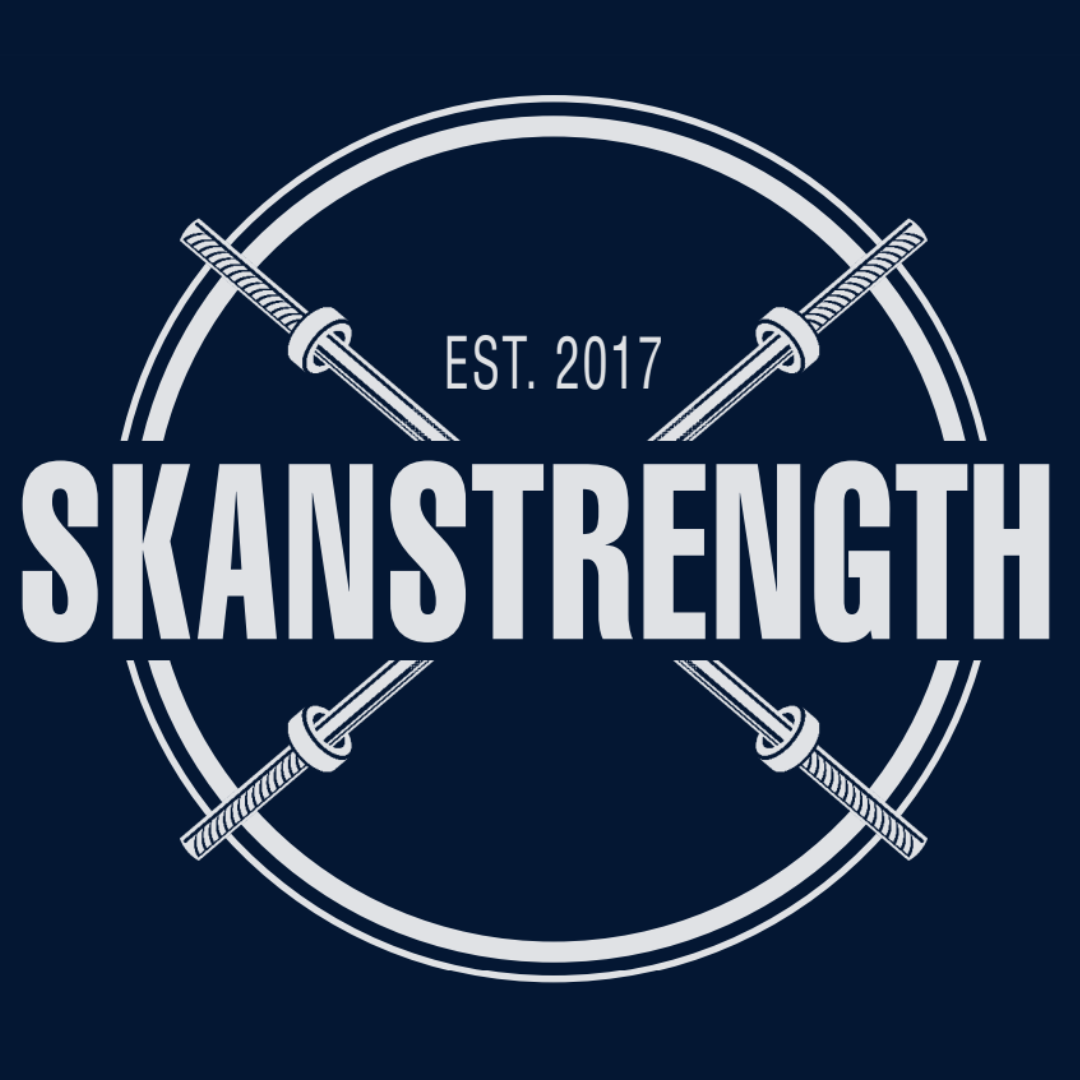You Don't Need to Be an Athlete to Train Like One
November 25, 2025
Here's Why You Should Anyway

Elite athletes have access to something most people don't: decades of sports science research that's been refined, tested, and proven to build bodies that perform better and last longer.
But here's the secret: those same principles work for everyone. Whether you're chasing championships, chasing your kids around the yard, or just want to feel capable in your own body—the training approach is fundamentally the same.
Let me show you why.
The Soviet Sports Science You're Already Using (Whether You Know It or Not)
Much of modern training wisdom comes from Soviet sports scientists who studied athletic development for decades. One concept they introduced—GPP, or General Physical Preparation—is arguably the most important thing to understand about how bodies get better.
GPP was developed and popularized by Professor Yuri Verkhoshansky, often called the "father of plyometrics" and one of the most influential sports scientists of the 20th century (Verkhoshansky & Siff, 2009). It's a systematic way of building comprehensive fitness that supports both performance and longevity.
The beauty? These principles work whether you're training for the NBA or just want to keep up with your grandkids.
Rethinking "Sport-Specific" Training (Or Really, Life-Specific Training)
Here's where conventional thinking gets it wrong: most people assume that if they're not competing in a sport, athletic training principles don't apply to them.
But think about it this way:
For some people, "practice" means sport practice and "competition" means games. But for many of us, "practice" is life—playing with kids or grandkids, coaching youth sports, weekend softball leagues, endurance competitions, or just being able to do the recreational activities we love without getting hurt.
So whether your "competition" is a championship game or keeping up on a family hike, the training approach is the same. It comes down to two fundamental questions:
Question 1: What Does My Body Need to Be Able to Do?
This is about preparation. Can your body handle the demands of what you love to do? Can it tolerate the amount and intensity, and recover well enough to keep doing it consistently?
For a serious competitor, this means being prepared for sport practice and games. For a parent, this might mean having the endurance and strength to coach a team or play tag without tweaking your back. For a recreational athlete, it's having the fitness to enjoy your activities safely.
Remember: more practice is only better if your body is prepared to handle that practice.
Question 2: How Do I Actually Get Better?
This is the "improvement" piece. Not everyone needs to get literally bigger, but everyone benefits from getting better at the physical qualities that support their goals (Suchomel et al., 2016).
It's not just about tolerating your activities—it's about excelling at them. Getting stronger so you can play harder. Building power so you're more explosive. Improving conditioning so you don't fade in the fourth quarter (or the fourth inning, or the last mile).
The key insight:
The exercises don't need to look like your sport or activity. They just need to prepare your body to do what you love, safely and effectively.
The Four Physical Qualities Everyone Needs (SAPS)
This framework—Speed, Agility, Power, and Strength—isn't just for athletes. It's for anyone who wants their body to work better.
Strength: The Foundation
Why it matters:
Strength is the foundation for all physical qualities and functional movement at any age (Suchomel et al., 2016). Adults can increase lean muscle and boost metabolism in just 10 weeks, while youth can improve strength by 30-50% in 8-12 weeks with proper supervision (Westcott, 2012; Stabenow Dahab & McCambridge, 2009).
What this means for you:
- Athletes: Foundation for power and speed development
- General Fitness Adults: Injury prevention, functional strength for daily activities, maintaining independence and preventing falls
- General Fitness Youth: Building movement confidence and physical literacy
Agility: Moving Better, Not Just Faster
Why it matters:
Agility training improves nervous system control, reaction time, and movement efficiency (Young & Farrow, 2006). It significantly improves change of direction speed, cognitive processing, balance, and fall prevention across all ages (Paul et al., 2016; Granacher et al., 2016).
What this means for you:
- Athletes: Sport-specific reactions and movement patterns
- General Fitness Adults: Better recreational sport performance, balance, coordination, and stability
- Youth: Body awareness and fundamental movement skills
Power: Quick Force Production
Why it matters:
Power—producing force rapidly—declines faster than strength with aging but is critical for athletic and functional activities (Reid & Fielding, 2012). Power training maintains fast-twitch muscle fibers and improves bone density and neuromuscular coordination (Mero et al., 2013; Ramírez-Campillo et al., 2018).
What this means for you:
- Athletes: Explosive movements for jumping, sprinting, and sport actions
- General Fitness Adults: Dynamic activities requiring quick force generation, quick reactions for safety and preventing falls
- General Fitness Youth: Natural athletic development and movement patterns
Speed: Energy System Development
Why it matters: Systematic development of energy systems supports the metabolic demands of your chosen activities (McArdle et al., 2015). Comprehensive conditioning provides superior health benefits, and high-intensity interval training produces similar or better cardiovascular adaptations in less time (Gibala et al., 2012).
What this means for you:
- Athletes: Energy systems matched to sport demands
- Adults: Cardiovascular health and activity endurance, heart health and capacity for daily activities
- Youth: Building aerobic base and work capacity
What This Looks Like in Practice
At SkanStrength, we apply these principles across all our programming:
Aging Strong
- Adult strength and fitness training for longevity and quality of life. You don't need to be elite—you just need to feel good and capable.
After School Fitness
- Teaching safe habits, building strength, coordination, and confidence in young people through age-appropriate training.
SAPS Classes
- Speed, Agility, Power, Strength development that makes challenging workouts feel like play.
Girls Power Hour
- Empowering young women through strength training and community building.
The point isn't that everyone needs to train like a professional athlete. The point is that the **science that makes professional athletes better works for all of us**—because we all have bodies that need to be strong, mobile, powerful, and resilient.
References
Bompa, T., & Buzzichelli, C. (2019). Periodization: Theory and methodology of training. Human Kinetics.
Gibala, M. J., Little, J. P., Macdonald, M. J., & Hawley, J. A. (2012). Physiological adaptations to low‐volume, high‐intensity interval training in health and disease. Journal of Physiology, 590(5), 1077-1084.
Granacher, U., et al. (2016). Effects of resistance training in youth athletes on muscular fitness and athletic performance. Frontiers in Physiology, 7, 164.
McArdle, W. D., Katch, F. I., & Katch, V. L. (2015). Exercise physiology: Nutrition, energy, and human performance (8th ed.). Lippincott Williams & Wilkins.
Mero, A. A., et al. (2013). Resistance training induced increase in muscle fiber size in young and older men. European Journal of Applied Physiology, 113(3), 641-650.
Paul, D. J., Gabbett, T. J., & Nassis, G. P. (2016). Agility in team sports: Testing, training and factors affecting performance. Sports Medicine, 46(3), 421-442.
Ramírez-Campillo, R., et al. (2018). Effects of plyometric jump training on vertical jump height of volleyball players. Journal of Sports Sciences, 36(9), 936-948.
Reid, K. F., & Fielding, R. A. (2012). Skeletal muscle power: A critical determinant of physical functioning in older adults. Exercise and Sport Sciences Reviews, 40(1), 4-12.
Stabenow Dahab, K., & McCambridge, T. M. (2009). Strength training in children and adolescents. *Sports Health*, 1(3), 223-226.
Suchomel, T. J., Nimphius, S., & Stone, M. H. (2016). The importance of muscular strength in athletic performance. Sports Medicine, 46(10), 1419-1449.
Verkhoshansky, Y., & Siff, M. C. (2009). Supertraining (6th ed.). Verkhoshansky.
Westcott, W. L. (2012). Resistance training is medicine: Effects of strength training on health. Current Sports Medicine Reports, 11(4), 209-216.
Young, W., & Farrow, D. (2006). A review of agility: Practical applications for strength and conditioning. Strength and Conditioning Journal, 28(5), 24-29.

You probably know that kids need to be active. But here's what's less obvious: the way you relate to movement matters more than whether you sign them up for the right programs. Children don't just need activity—they need to see adults who have a healthy, joyful relationship with it. And right now, they're watching everything you do. 1. Kids Mirror Your Relationship with Movement When children see you enjoying physical activity—not suffering through it—they internalize that movement is joyful, not punishment. At SkanStrength, we consistently watch kids light up when their role models join in our activities. They don't see "exercise" as something adults dread; they see it as something fun that brings people together. Research backs this up: adult encouragement and attitudes toward being active significantly influence how much children move and play (Jago et al., 2020). Your relationship with your body and movement becomes theirs. 2. Your Stress Response Becomes Their Blueprint Here's something more powerful: kids are watching how you handle stress, setbacks, and challenges. When you model healthy coping through physical activity, play, or mindfulness practices, you're teaching them invaluable life skills. Studies show that how parents manage their emotions becomes the template for how children learn to handle their own emotions—for better or worse (Morris et al., 2022). Children learn coping strategies by watching adults, even when they don't directly see the strategy in action but simply experience the adult staying calm during tough situations (University of Vermont, 2018). That walk you take when you're frustrated? The pickup basketball game you play with friends? Your kid is filing that away as "this is how adults handle hard things." 3. Lifelong Play Creates Deeper Connections When adults continue to play—whether with friends, in sports leagues, or alongside their kids—it creates opportunities for genuine connection that goes beyond typical adult interactions. Research shows that play releases endorphins and reduces social barriers, allowing for more authentic relationships. Children who see their parents laughing, being silly, and enjoying recreational activities with others learn that play isn't something you outgrow. It's a tool for building and maintaining meaningful relationships throughout life (Gray, 2013). This modeling teaches them that staying playful is actually a social skill that enhances friendships, family bonds, and overall life satisfaction. Why This Matters for How We Build Programs This is exactly why we design programming that serves multiple generations at SkanStrength and through our Neighborhood Games. We encourage whole families to find activities they love, and we create environments where everyone—regardless of age—can experience their own version of joyful movement. Because the best youth fitness program in the world won't matter if kids go home to adults who treat movement like a chore. Want to explore what this looks like in practice? Check out our Neighborhood Games for community play that welcomes all ages, or learn about our family-friendly wellness programming at Skaneateles Fields. References: Jago, R., et al. (2020). Parental modeling and sedentary behavior. Journal of Physical Activity & Health. Morris, A. S., et al. (2022). The role of the family context in the development of emotion regulation. Social Development. Gray, P. (2013). Free to Learn: Why Unleashing the Instinct to Play Will Make Our Children Happier. University of Vermont (2018). Children's emotional development research findings. Retry

